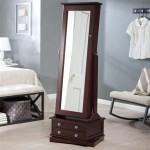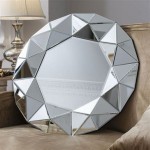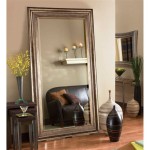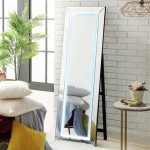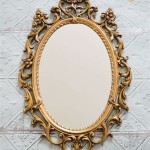Are Floor Mirrors Safe?
Floor mirrors, also known as full-length mirrors, offer a convenient way to check one's appearance and can also enhance a room's aesthetics by creating an illusion of greater space. However, their size and freestanding nature raise legitimate safety concerns, particularly in households with children or pets. Understanding these potential hazards and implementing appropriate safety measures are crucial for responsible ownership.
One primary safety concern associated with floor mirrors is the risk of tipping. Their tall, slender design makes them inherently less stable than wall-mounted mirrors. Accidental bumps, playful pets, or children attempting to climb or pull themselves up on the mirror can easily cause it to topple over. The resulting impact can lead to injuries from the mirror's sharp edges, broken glass shards, and the weight of the mirror itself.
The material of the mirror itself presents another safety consideration. Most floor mirrors are made of glass, which is inherently fragile and prone to shattering upon impact. Even tempered glass, designed to break into smaller, less dangerous pieces than regular glass, still poses a risk of cuts and lacerations. The larger surface area of floor mirrors increases the potential for significant injury if the glass breaks.
The frame construction and stability of the base significantly influence a floor mirror's safety. Flimsy or poorly constructed frames can weaken the overall structure, making it more susceptible to tipping. Similarly, a narrow or unstable base offers less support, increasing the likelihood of the mirror toppling over. Inspecting the frame and base for sturdiness is essential when purchasing a floor mirror.
The placement of a floor mirror within a room further impacts its safety profile. Positioning the mirror on uneven flooring, near high-traffic areas, or in rooms where children frequently play increases the risk of accidents. Placing the mirror against a wall can provide some added stability, but secure wall-mounting remains the safest option, especially with larger, heavier mirrors.
Several preventative measures can mitigate the safety risks associated with floor mirrors. Securing the mirror to the wall using appropriate hardware specifically designed for mirrors is highly recommended. This prevents tipping and minimizes the risk of the mirror falling. Various anchoring systems are available, and selecting the right system depends on the mirror's size and weight, as well as the wall material.
Choosing a mirror with a shatter-resistant film or safety backing can further enhance safety. This film helps hold the glass shards together in case of breakage, reducing the risk of injury from flying glass. While not entirely eliminating the danger, it significantly reduces the severity of potential injuries.
Regular inspection of the mirror for any signs of damage, such as cracks in the glass or loosening of the frame, is crucial. Addressing these issues promptly prevents further deterioration and reduces the risk of the mirror breaking or tipping over. If significant damage is found, the mirror should be replaced or repaired professionally.
Educating children about the potential dangers of floor mirrors is essential in households with young family members. Teaching them not to climb on or play near the mirror instills safe habits and minimizes the risk of accidents. Supervising children around floor mirrors, especially toddlers and younger children, is particularly important.
Selecting a floor mirror with rounded corners or edges can reduce the severity of injuries in case of accidental contact. Sharp corners pose a higher risk of lacerations, especially for children. While rounded corners do not eliminate the risk entirely, they offer an added layer of safety.
Considering the weight of the floor mirror is also important. Heavier mirrors are generally more stable than lighter ones, making them less prone to tipping. However, the increased weight also poses a greater risk of injury if the mirror does fall. Balancing weight with stability is crucial when selecting a floor mirror.
Opting for alternative materials, such as acrylic, offers a safer option for households with children or pets. Acrylic mirrors are less prone to shattering than glass mirrors and are significantly lighter, reducing the risk of injury from impact. While acrylic mirrors might scratch more easily than glass, they present a less hazardous alternative.
The environment in which the floor mirror is placed also plays a role in its safety. High-humidity environments can weaken the backing of the mirror over time, making it more susceptible to damage. Extreme temperature fluctuations can also affect the integrity of the mirror. Considering environmental factors helps maintain the mirror’s structural integrity and prolong its lifespan.

How To Secure A Leaning Mirror The Wall Diy Playbook

The Perfect Leaning Mirror April 2024 Your Guide To 9 And Floor Mirrors

The Perfect Leaning Mirror April 2024 Your Guide To 9 And Floor Mirrors

How To Secure A Heavy Leaning Floor Mirror The Wall Love Our Real Life

The Perfect Leaning Mirror April 2024 Your Guide To 9 And Floor Mirrors

The Perfect Leaning Mirror April 2024 Your Guide To 9 And Floor Mirrors

Where To Hang A Full Length Mirror Seriously Happy Homes

The Perfect Leaning Mirror April 2024 Your Guide To 9 And Floor Mirrors

Leaner Mirrors Best Floor For Your Space 2024

12 Best Full Length Mirrors 2024 Affordable Long

